Best Conducting Techniques for All Ensembles
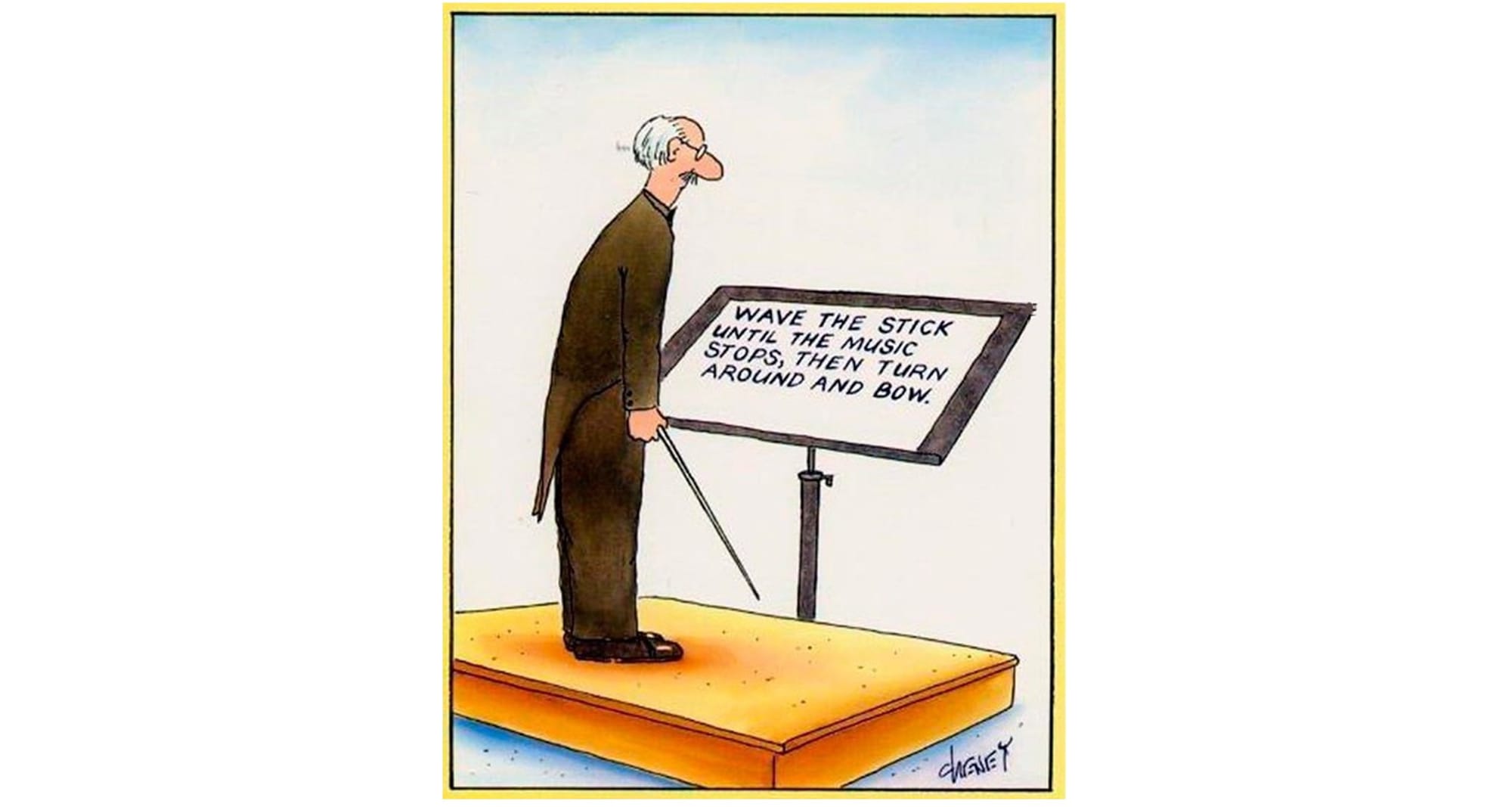
Personal Story – When I was in high school I sang I the chorus and played in the band. Each of the conductors used virtually the same technique; the choral conductor used his hand and the band director used a baton, but the movements were nearly identical. When I got to college and sang in the various choirs and played in an assortment of instrumental ensembles, the conductors each used techniques nearly identical to the ones in high school. I took a conducting class and the methods taught were the same as I had been used to for years.
While in college and afterward, I had the privilege of conducting a number of musical groups, choral, instrumental and combined. Using the techniques I had seen, learned and practiced, I never once had any musician ask what I meant by a certain gesture or even once look confused.
No musician or ensemble should ever have to “get used to” a conductor’s odd or nebulous conducting style.
The method contained in this article is solid and proven.
History of Conducting
The history of conducting as we understand it is only very generally known. In the book of Chronicles, Psalms and other places in the Old Testament, there is a record of large numbers of singers and instrumentalists performing together. There was undoubtedly some sort of conductor keeping them all together.
Starting in the Renaissance in Europe, most ensembles relied on the keyboardist, first (or only) violinist or principal singer to keep the group together. This included all sorts of methods, including hand signals, foot stomping, the waving of a violin bow, and the pounding of a staff on the floor to keep the beat and signal other directions to the group.
When the Romantic period began, not only were orchestras becoming larger, the music needed to be interpreted more keenly. This required someone not only to keep a beat and cue entrances, but also to indicate tempo and dynamic changes and subtleties. Thus was born the modern conductor.
This article is going to divide the art of conducting into two separate sections. The first is the technical part – how to properly use hands or a baton to conduct an ensemble.
The second will concern itself with the overall techniques needed to successfully lead a group – including dealing with musical aspects, leadership, social aspects, and more.
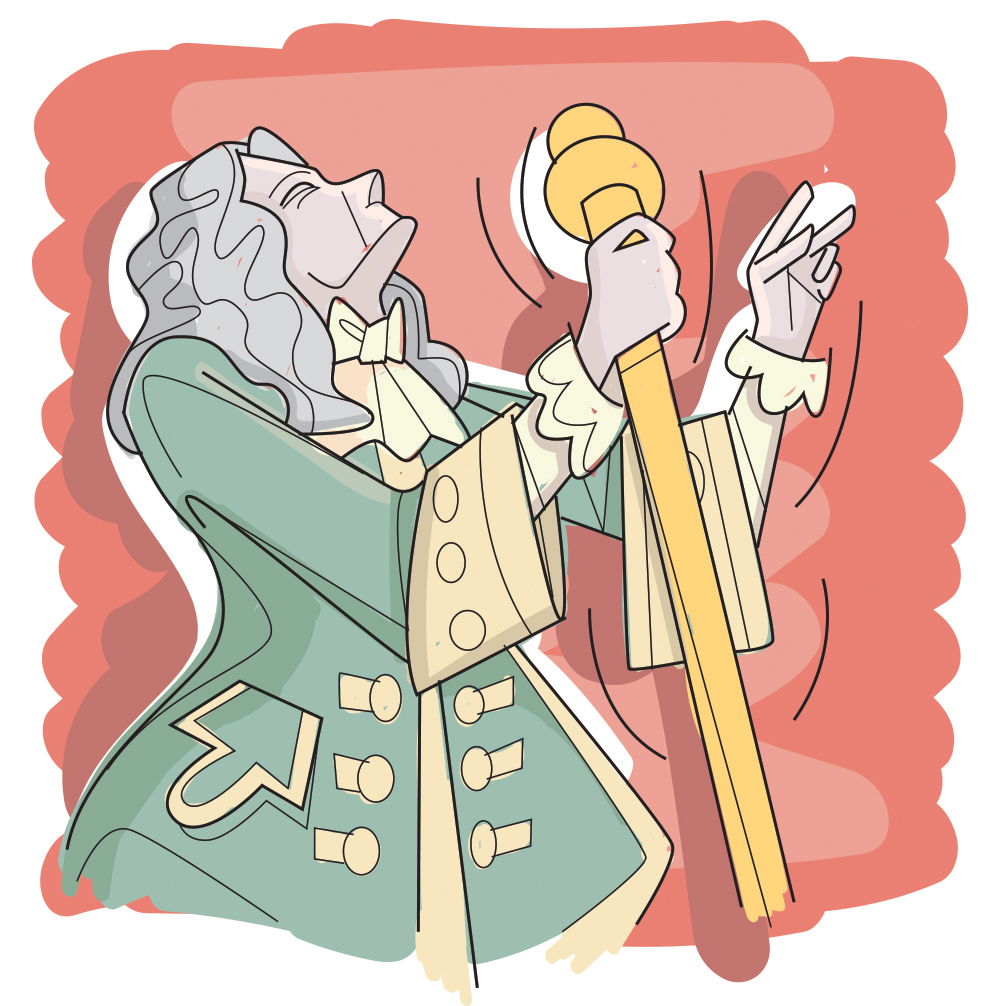
TOOLS OF THE TRADE
HANDS OR BATON?
A conductor has two choices when choosing conducting tools – hands or a baton.
There has been a tradition among many conductors that hands were used only for choral music and a baton was reserved for instrumental music or combined choral and instrumental music groups. It grew from a somewhat reasonable set of situations. Choral groups were smaller and instrumental groups could be quite large.
The decision about whether to use hands or a baton depends on the size of the group, and sometimes on its shape or location.
It’s very simple – If it’s a small group, use your hands. Of it’s a large group, use a baton.
There is no simple way that you can tell a large group from a small group. If the group is arranged in a tight semicircle like the band below, and there are just a few of each part, using one’s hands to conduct would do just fine.
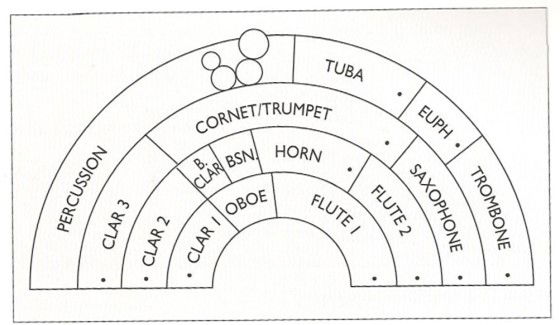
If the same shaped group took up half or more of a standard stage area, a baton would be called for.
The other factors to keep in mind when deciding which to use is the shape of the ensemble. If the ensemble is like the one below, no matter the size, a baton may be the better option. The reason is that the baton is bigger and easier to see than hands alone. Such a configuration might be seen in an orchestra pit or in a church in front of the choir or praise band, somewhere where there isn’t much room.

Another thing to consider is that, if you really feel better with a baton, even for a small group, a shorter baton may be just what you need.
In the end, it’s up to the conductor as to whether a baton is needed or not. If one would try just the hands and the ensemble sounds sloppy, then maybe the baton is needed to help the ensemble become more precise.
NO MATTER WHAT
These are some very basic, universal things that all conductors should do:
- Conducting should give clear visual cues, maintain proper tempo, and communicate musical expression.
- Right Hand – Whether left or right handed, always mark the beat with the right hand. Musicians are used to this and, especially if the music is more difficult, getting used to the beat in the left hand can be unnerving.
- Left Hand – Unless a tempo or meter change needs extra reinforcement, for a final fermata, or some other very particular need, only use the left hand for entrance cues or cutoffs, dynamic changes, and other occasional directions.
- The Box – The vast majority of your conducting should be done within the framework of what could be called “The Conducting Box”. The diagram below shows where this box is. It’s basically between your shoulders with the top at the top of your shoulders and the bottom at the bottom of your elbows, about belly button height. The One beat is always in front of the belly button.
If you locate the Box on your body, you’ll notice that it is really quite large. It allows for quite a range of dynamics, with room for entrance cues, tempo changes, and other non-timekeeping tasks.

There are, of course, exceptions to the rules. A large crescendo or forte on a big ending may call for some exaggerated gestures. These should be rare because if they are the norm, they won’t stand out or mean much when you use them. But, even in these rare cases, your hands and baton should not exceed the width of your bent elbows. See the picture below.

Having said all of that, there will still be instances when you will probably wave your arms too high or wide or point at a trumpet player. Just be sure to keep it all in perspective. It’s like a good cadenza – not to played for the whole piece.
The bottom of the box is where ALL beats are marked. The point at which they are marked is called the ictus. It comes from the Latin and means a stroke or blow. Pretend that there is a table top right at belly button height and tap all your beats there. Also, be sure to keep the placement of each ictus consistent. If beat two or three is in a different location each time, the musician who has taken a glance at the music and then looked up again at the conductor, may think that a beat has been missed if the ictus isn’t consistent.
Here are the most common patterns and where the ictus should be.
This is what I consider to be the better pattern to use to conduct music in 2/4, or common time. There is another that uses a back-and-forth motion, but it’s hard to make a good ictus on beat two with that one.
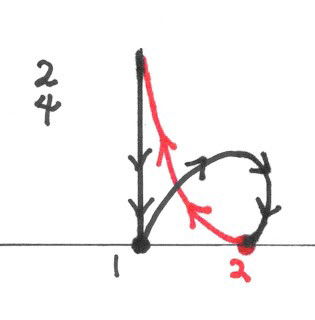
Music in 3/4 is conducted like this. I generally make beat three a little closer to half-way between beat two and beat one, but as long as there is a clear ictus for all three beats, this will work well.
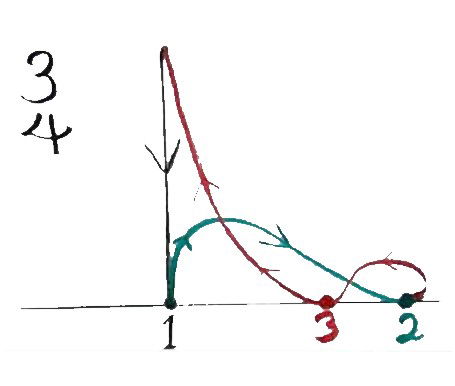
The beat pattern for music in 4/4 is done this way. You’ll notice that beat four is about halfway between beats three and one.

Music in 6/8 time can be conducted two ways. If the music is slow enough, the diagram below is the best way to conduct it. If the music is more “in Two”, use the pattern for 2/4 time. You’ll notice that in all four examples, the last beat is conducted toward the Beat One location. I tend to reverse the location of beats 4 and 6 so that the last beat is always in the same relative location. Whatever you decide to do, keep it consistent, no matter the time signature.

All of the patterns so far have been for standard or more legato passages. If there is a need to subdivide a passage, use the method depicted below. You’ll notice that each beat is distinctly subdivided and that each up-stroke stops at the same place. If the passage is quiet, the up-stroke can be at a lower position, while loud passages can have a much higher stopping position for the up-stroke.
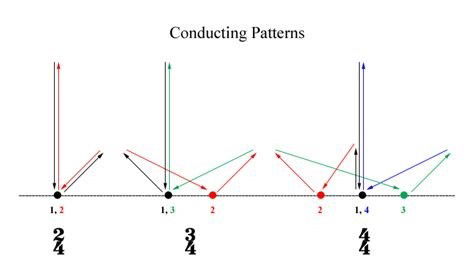
Patterns for 5/8, 7/8 and others depend on where the measure divisions are. Those patterns might be in another article.
On occasion, your left hand will need to go outside the box to indicate cues for those either in the back or off to one side of the ensemble. However, it shouldn’t be the norm.
- Refrain from tiny nuanced or exaggerated motions. If you need to convey to your group that a certain phrase needs to be loud or staccato or something else specific, then you haven’t rehearsed well. Conducting motions should be reminders of what was done in rehearsal, not a new directive.
- And don’t ever “stab” your motions, e.g., a “punching” motion. When your hand or baton travels out from you, that motion is only visible by those sitting to the sides. Few musicians, especially those in the back, can tell what the motion is or how emphatic it is.
- Make Cue Entries and Cut-offs Clear. For cueing, make eye contact with the section you're cueing. Depending on the type of ensemble, its size, and the location of the section to be cued, you can use a small lift or nod with the left hand to show when to come in. There are a couple of “traditional taboos” when it comes to cueing. “Never point at tenors or trumpet players.” My experience from singing tenor and playing trumpet has proven these to be true, although no one knows why. Instead, use a simple nod with the hand.
- For a cut-off, give a clear motion—often a small circle followed by a sharp stop.
- Show Expression with Your Face
This needs to be done very carefully. Conducting is primarily done with your hands. However, you don’t need to maintain a stone face. Facial expressions help communicate the mood (joyful, solemn, majestic, etc.). And don’t ever sing the lyrics to the choir. - Practice. Practice in front of a mirror, or a small group of willing musicians that will give you honest, constructive feedback.
HANDS ONLY CONDUCTING
- Generally, keep your hands flat. The thumb can be touching the index finger, but, generally, it shouldn’t be sticking out far. The extended thumb can be extended to indicate louder dynamics or a longer fermata, but if it’s extended all the time, it loses its emphasis at the time that it’s needed.
- Refrain from making subtle cues with your hands, e.g. fingers in a certain position.
BATON CONDUCTING
- Hold the Baton lightly between your thumb and first two fingers of your right hand. Let it rest gently in your hand, so it feels natural. Don’t grip it too tightly. The baton should point slightly upward and move freely with your wrist.
- Keep your movements clear and controlled. Remember that the baton is an extension of your hand. Use your wrist for smaller, quicker beats. Use your whole arm for larger, expressive gestures (especially in crescendos or big entrances).
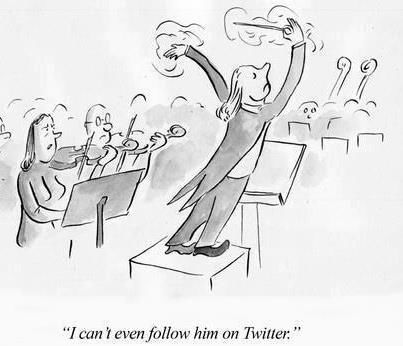
CONDUCTING WITH HEART
Conducting is also about leadership, communication, and inspiration. A good conductor brings out the best in each musician and guides the group to play as one. No matter what kind of group you’re leading, here are some of the best ways to conduct a musical ensemble effectively.
- Know the music deeply. Before rehearsals begin, study the score thoroughly. Know each part—melody, harmony, rhythm, and dynamics. Understand the message the music is trying to communicate.
- Build relationships with your musicians. A successful ensemble thrives on trust and unity. Take time to know your musicians. Encourage them, listen to their concerns, and show appreciation. When musicians feel valued, they play with more heart. A good conductor is like a shepherd—gentle but firm, leading with love.
- Communicate clearly. Use your hands, eyes, and body language to communicate the music. Your gestures should show the beat, the mood, and any changes in tempo or dynamics. Maintain eye contact — it builds trust and helps them stay connected to your direction. Simple, clear cues are more effective than overly dramatic motions.
- Lead with humility and confidence. A conductor should be confident, but not proud. You are not above the musicians — you are helping them function as a whole. Be open to feedback and willing to admit mistakes. A humble heart earns the respect of the ensemble.
- Foster a spirit of excellence. Encourage your group to aim for excellence, not to impress others, but to honor the Creator with their talents.
- Rehearse with purpose. Plan your rehearsals carefully. Begin with a good word, focus on problem areas, and always end on a positive note. Use time wisely and keep the energy up. Avoid long lectures. Also, be patient. Growth takes time, and every rehearsal is a step toward a better performance.
- Encourage teamwork. An ensemble is a team. Teach your musicians to listen to each other, blend their sounds, and support one another. Remind them that the beauty of ensemble music comes from unity, not individual brilliance.
Conclusion Conducting a musical ensemble is a sacred responsibility. It requires skill, heart, and maturity. By preparing well, leading humbly, and pointing your ensemble toward excellence and worship, you can help create music that not only sounds beautiful but also touches hearts. Let every note, every beat, and every breath be an offering to the One who gave us the gift of music.
Salt Cellar Creations understands the beauty and power that a Music of all sorts can convey and the challenge that music directors face in choosing the best music for their ensemble. SCC has a growing library of original works and arrangements to help meet the needs of music teachers and directors Find out more about what Salt Cellar Creations has to offer HERE.
SCC can also compose an original piece for you or do a custom arrangement for you to allow you to showcase your group. There are two ways that this can be done; one is much more affordable than the other. CONTACT US for more information. And SCC is always looking for ideas of pieces to arrange or suggestions for original pieces.
We have written and arranged music for groups not only in the US but also in Canada, the United Kingdom, France, Australia, New Zealand, and Austria. Please CONTACT US to let us know what we can do for you!